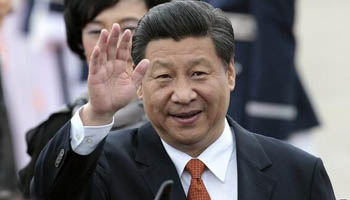????A U.S. Navy warship entered waters near China’s Nansha Islands and Zhubi Reef in the South China Sea on Oct. 27, 2015, triggering an international outcry. By traveling so far to flex its muscles, the United States was seeking to make trouble in the western Pacific, raising some eyebrows in the international community and evoking Chinese anger.
????The South China Sea should be tranquil if the United States refrains from making trouble, as China and all other relevant parties have made concerted efforts to secure the region’s peace and stability. The purpose of the so-called “patrol” of USS Lassen was undoubtedly to disturb the tranquility of the region. Chinese Foreign Minister Wang Yi had warned the United States to think twice before this action and to avoid causing trouble out of nothing.
????It is common knowledge that China and the United States have maintained communication over the South China Sea at various levels and the latter was clear about China’s principle and stance. As the two most significant powers in the Pacific Ocean, the two countries should both play a constructive role in securing regional peace, which will benefit the peoples of both countries and forcefully promote the peace, stability and development of the Asia-Pacific region and the wider world. Last month, the leaders of both countries reached a consensus to maintain constructive communication. U.S. President Barack Obama said he believed both sides were capable of controlling their disparity and agreed to healthy interaction on the issue. His remarks indicated that both sides were capable of turning disparity into cooperation through dialogue and consultation.
????The “patrol,” however, revealed the capriciousness of the U.S. side. Such a provocation despite its promises and the international consensus revealed the irresponsibility of the United States regarding the peace of the South China Sea.
????The excuse of safeguarding the freedom of navigation in the South China Sea was no grounds for the blatant U.S. actions in the region. The Nansha Islands have long been China’s territory. China has sufficient historic and legal evidence of this. Through the concerted efforts of all relevant parties, the situation in the South China Sea is stable on the whole. The region is a significant sea route for international trade, so China, more than any other country, wants the region to be peaceful, secure and stable. Currently, China is striving to advance consultations with the countries of the Association of the Southeast Asian Nations on the Code of Conduct in the South China Sea within the framework of the Declaration on the Conduct of Parties in the South China Sea.
????The development and maintenance of some islands and reefs with Chinese stations is not targeted at any country. The work should not be played up as its purpose is to improve the living conditions of the people on the islands and to provide public services to secure the freedom and safety of navigation in the South China Sea.
????If some people want to make trouble, China will never withdraw. President Xi Jinping has said in an interview with Reuters that the islands of the South China Sea have been an integral part of China’s territory since ancient times. The Chinese people will not let anyone intrude on China’s sovereignty and other interests.










